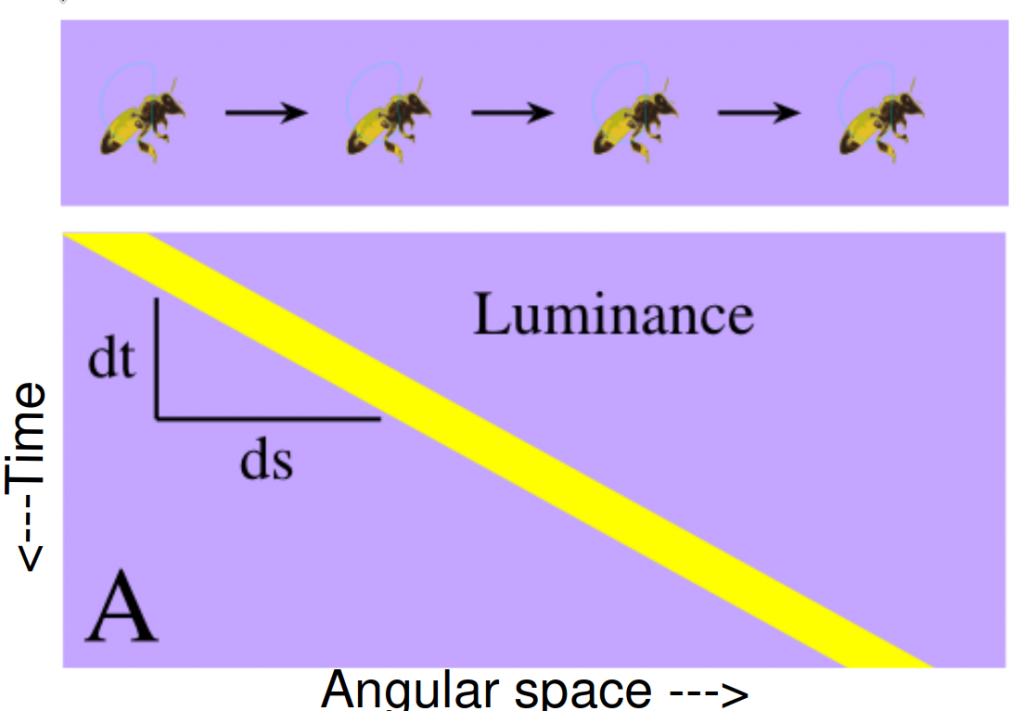
In sensory neurobiology, the components necessary to detect image motion are: 1. at least two light detectors, viewing different regions in space (this is realized by interommatidial angle), 2. a temporal difference (this is the delay of the signals that cross over), and 3. a nonlinear interaction (this is the multiplication of the direct and delayed signals). This is a full correlator, two half correlators mirroring each other, and when the parameters are all correct, it registers positive for one direction and negative for the other.
Basically, when an image is moving, first one detector will pick it up, then a second one will pick it up, but at a later time. To decide if these detectors correlate, we just multiply the output of second with the delayed output of the first. If the delay brings them into close agreement, the bright parts (positive) will align and multiply together, yielding positive outputs, and the dim parts (negative) will align and multiply together, also yielding positive outputs. If the delay brings the signals farther out of phase, dim and bright (positive and negative) elements align and multiply together, yielding negative outputs.
